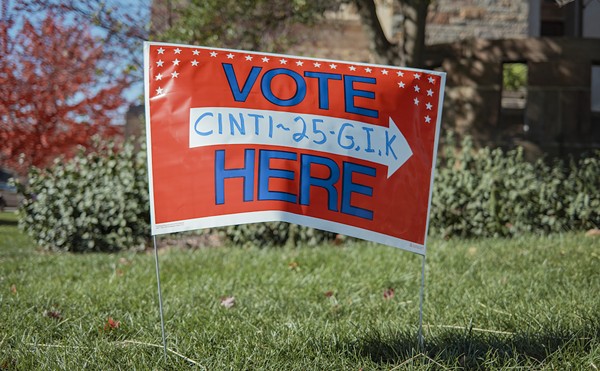|
Despite pre-election warnings about the potential for a flood of violent inmates being released early if Hamilton County's sales tax weren't increased to pay for a new jail, some new data shows voters might have made the correct decision in defeating the proposal.
More than a month after the November election, Hamilton County commissioners got a peek at a preliminary report on who's locked up at the Justice Center, a much-more detailed follow-up to a 2006 profile — conducted by criminal justice experts hired by the county — that stirred controversy. The full report is expected later this month or in early February.
The latest findings, by the New York-based Vera Institute of Justice, are eye-opening. The study found that a majority of people jailed at the Justice Center — 57 percent — are there for non-violent offenses and have little or no history of committing violent crimes.
Also, the report shows most of the inmates locked up there are charged with theft, accounting for 8.8 percent of the jail population, and domestic violence, at 6.7 percent.
But the next three highest categories of inmates at the Justice Center are awaiting trial on drug-related charges. They include drug possession (5 percent), drug paraphernalia (4.4 percent) and marijuana possession (3.6 percent). Combined, they account for 13 percent of the inmates.
Additionally, people arrested on drug possession charges are held much longer at the jail than those charged with other offenses.
The average length of stay for a person arrested for drug possession is 18.6 days, compared to 15.3 days for people arrested for parole violations, 13 days for people arrested for theft, and 12.3 days for people arrested for obstructing official business.
Much as perspectives varied greatly on last November's proposed sales tax to build a new jail and pay for treatment programs for offenders, the statistics are being interpreted differently by people who disagreed about the tax.
"This just underscores a lot of the points the tax opponents made that there are plenty of systemic changes that need to take place before we talk about the need for new jail space," says Hamilton County Commissioner Pat DeWine, a Republican who opposed the tax.
If approved, the tax hike would have increased the sales tax for 15 years. The $736 million in revenues generated would have been used to build a $198 million, 1,800-bed adult jail in Camp Washington and fund substance abuse treatment, counseling and probation programs for offenders. It was rejected by 56 percent of voters.
County Commissioner David Pepper, a Democrat who supported the tax, says it's appropriate that most inmates are people charged with theft and domestic violence but concedes that some changes are needed to defer other offenders into treatment programs to ease jail overcrowding.
"There are certainly some issues to change but the people spending the most time are people we want to have spend time there, who rob and beat people," Pepper says. Still, he adds, "There have got to be ways for us to reduce the amount of time people spend in jail for things like driving with a suspended license."
Between 2003 and 2006, jail overcrowding led to the early release of 807 prisoners — although all were non-violent offenders. The space crunch led Hamilton County to rent jail space from Butler County last year, but that has stopped due to budget cuts.
Of the 31,020 inmates sampled in 2006 for the report, more than 12 percent — or 3,792 people — had been booked three times or more in the past. Of those, 77 individuals previously had been booked 10 times or more.
Pepper says the county's criminal justice panel — comprised of judges, prosecutors, public defenders, probation officers and others — must focus on creating better ways to reduce recidivism in the next year.
One alarming statistic found that people in the jail on "holds," who are waiting on items such as blood tests, DNA tests or federal warrants, comprise 56 percent of total jail bed days. Their average length of stay is more than a month, 30.9 days.
"It basically doubles the amount of time held," DeWine says. "There's much room for improvement there."





